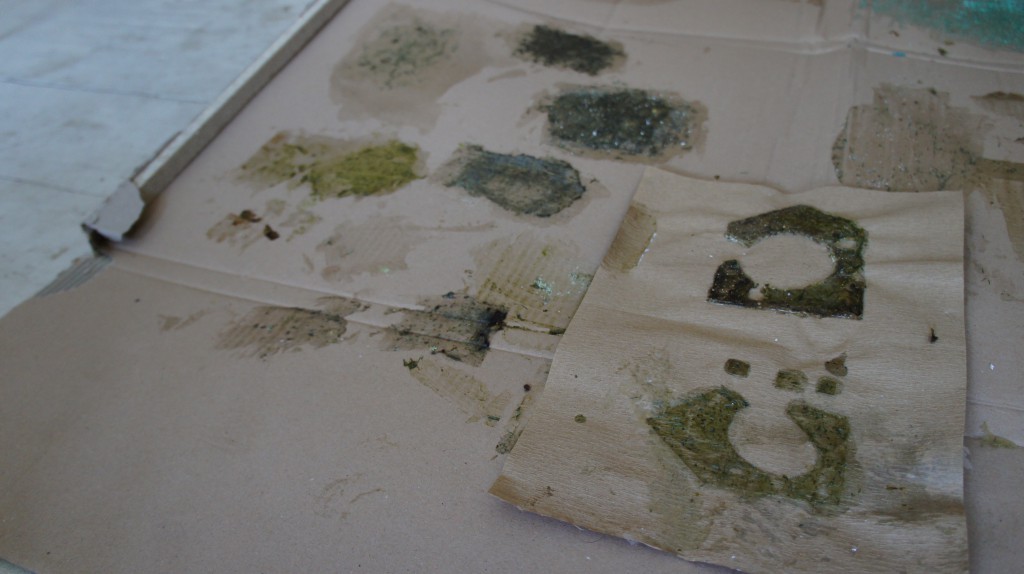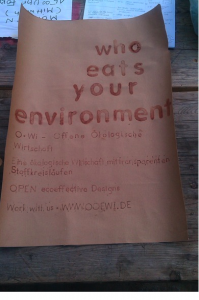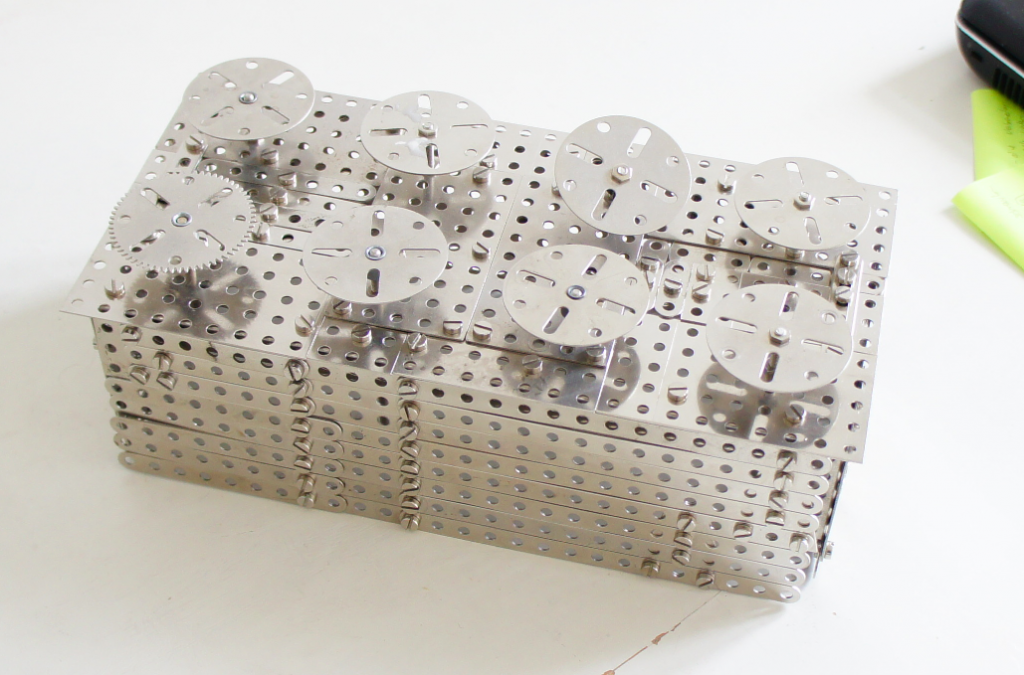Patents & Innovation-Costs in an Open-Source-Circular-World
(en;–)
This wednesday (March 5th 2015) i am going to sit on a two person podium with the patent-lawyer Dr. Dirk Schleitzer at the german Frauenhofer research institute UMSICHT in Oberhausen debating about open source vs. patent based/motivated innovation.
 Am i going to argue, that we don’t need patents at all? Of course not. I rather ask questions and tell stories about successful and interesting open source innovations. And amongst others I will share a bit – although a tiny one – that I recently discovered in my own real hands on laboratory when building a metal construction Lego-Toy-Brick. I like to share this bit upfront with you here:
Am i going to argue, that we don’t need patents at all? Of course not. I rather ask questions and tell stories about successful and interesting open source innovations. And amongst others I will share a bit – although a tiny one – that I recently discovered in my own real hands on laboratory when building a metal construction Lego-Toy-Brick. I like to share this bit upfront with you here:
Introduction: Developing hardware is expensive !
The major argument for patents is that the development of new products or solutions is expensive. The patent then grants a commercial monopoly over an invention to allow the inventor to get his investment back plus a revenue on top. Patents trigger the motivation to invest in the first place.
And when it comes to hardware this can be true indeed. I recall being at an award ceremony for resource efficiency at the BMBF where the company Voigt & Schweitzer GmbH & Co. KG got an award for a new corrosion control technique. The idea for the new technique was discovered by accident (someone had forgotten something in the oven) and going from that accident they developed the new solution. They won the award for two reasons. One: because the new technique saves a lot of resources (80% fewer zinc and lower temperatures) & two: because they had developed it so quickly, they needed only 400 iterations to find the final recipe & process.
400 iterations! To buy materials for 400 tests, mix them up 400 times, heat the oven again and again, dispose failed versions and all the hours of work to do this. I can’t imagine how expensive this must have been.
Coming myself not from a maker or engineer background I really learned something back in 2012 when we tried to develop a biodegradable poster. I experienced directly that atoms are complicated and will surprise you with a thousand things you cannot foresee. The project ended up being expensive because every new test-series needed new materials, energy and time… And the project never got very far.
Images from the biodegradable OWi-poster development experiments:
In-between-conclusion: Developing new hardware can be really expensive because it wastes a lot of materials, energy and time. And probably we need patents when this is the case … BUT:
Decreasing Costs for Innovation 1 – Open Source & Digital Fabrication
But one thing we see – at least in the world of electronic hardware – is that the costs for developing new things decreased in the last decade dramatically and still keep decreasing. There is a whole bunch of reasons for this with one being the rise of digital fabrication. Another reason is the growing open source ecosystems in electronics. A simple and famous example: Instead of having your own microcontroller developed for your prototype use an Ardunio. And take a look at the massive forums of Arduino full of open knowledge to help with questions and allowing to make fast progress.
“It is not ‘open source your hardware’ it is ‘building open source hardware’” says my colleague Sam Muirhead meaning that you use open source ecosystems of accessible knowledge, hardware and opportunities as a medium to grow yourself in and therefore be quicker and consume fewer resources.
Decreasing Costs for Innovation 2 – Modularity and Circular Economy Hardware
But here is one more: In the last weeks my evening relax project is to build a Lego-Brick with old GDR mechanical constructions-toy-kits. The Lego-Brick will really work in the end, its almost finished. I work on it in the late evening when I am already tired, not much planning goes into it.
The project turned out to be complex – or at least way more complex than I expected. In the development process of the brick I made a lot of mistakes, I had to start over often and went through several iterations.
Lego-Brick – not finished yet. I will publish it here once it is done:
Seven or six holes? How to design the edges in order to make it really work in the end? How high should the brick be? How to design the plug-mechanism? What about the aesthetical aspects, will it really look like a Lego-Brick in the end…
And the interesting finding/experience in comparison to the OWi-poster development process was: Because the design is build with something modular and reusable every iteration did not cost me anything more then my time. Because nothing was glued, sawed, burned, melted or trashed nothing needed to be replaced with something new. Every new iteration was built with the same materials (atoms) as its predecessor. I just had to disassemble and start over. –> Development costs on the material side was very low.
An Open Source Circular Economy
And I think this is interesting! In an Open Source Circular Economy – something we are going to ask for, promote and experiment during the Open Source Circular Economy Days 2015 – innovation costs for the development of a bunch of things could drop dramatically because of a mixture of open knowledge, open modularity & open recyclability.
Open Source Circular Economy Days – a global event & hackathon exploring Open Source for Circular Economy; Hashtag: #OSCEdays
The great Open Structures project – which recently decided to build its future completely on open source principles – is already an attempt to make for real world items possible what mechanical construction kits (or Lego) does in the world of toys – a modular construction kit for constant reuse of parts and reinvention of objects. An inspiring metaphor, idea and role model for an Open Source Circular Economy.
Open Structures – one of the great metaphors/prospects for an Open Source CIRCULAR Economy
And we need things like that – open modularity – also in many other areas! We need for example open source recyclable materials, something I am going to experiment with and develop more in the second half of this year and next year with the Baubus project (please get in touch if you like to support this project). If the things around us are openly build with regenerative/reusable/recyclable materials and structures we are always surrounded by resources for innovation and constant recreation of our world.
Conclusion – TL;DR
In an open source based circular economy innovation costs for new products might drop massively, making patents less necessary.
R E P R I S E :
This is a simple but yet for its time pretty smart cashier-machine built by the very young KONRAD ZUSE who later built the Z3 the worlds first programmable computer. See! He used a mechanical construction toy kit as well. (I took this photo of a photo at the Technikmuseum Berlin as a reminder for myself, sorry for the quality. No copyright infringement intended.)
–












